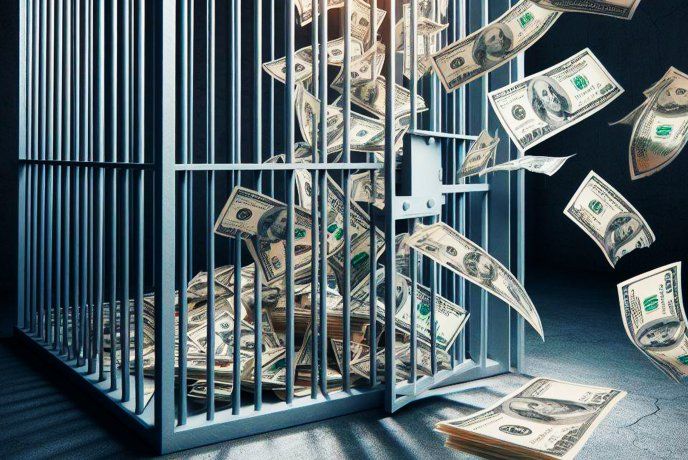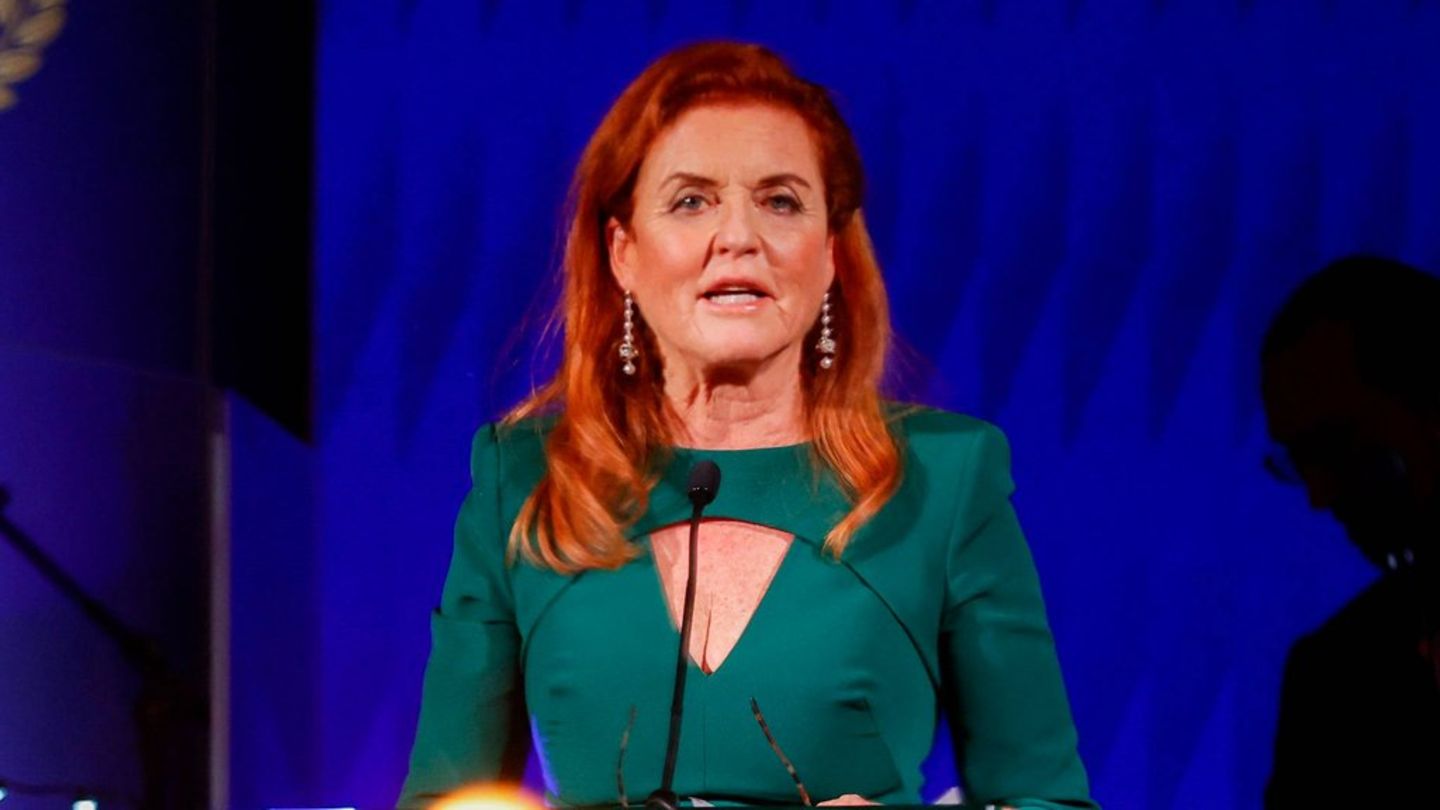There was no euphoria in the markets after the passing of the Bases law. It happened, according to analysts, that despite the expectation, Investors had already discounted approval and that is why assets did not take off. The Government also did not stop celebrating its first political victory in Congress, worked for 6 months, and announced a new monetary regime. Monday when the bell rings to start the financial day will be the litmus test for Javier Milei and his troops, who enter the Phase 2 of its management.
As in the recently released movie Inside Out 2, the new emotion in the market is anxiety. There are doubts. Everyone is looking at the dollar. Not only because of whether or not there will be a devaluation that the Government assures will not occur; In fact, the Minister of Economy, Luis Caputo, emphatically confirmed that the “crawling peg” of 2% per month will be maintained. There is also an alert for reserves, after a negative month for the BCRA that went from buyer to seller. And it remains to know the fine print of the new monetary regime.
Concern over BCRA reserves
Regarding reserves, he analyzes: “Beyond the slowdown in the pace of purchases, we highlight that the government has more than met the goals agreed with the IMF, giving it its back for the negotiation of a new agreement. In turn, the IMF itself foresees that the BCRA will lose reserves in the third quarter, now without the boost of the large harvest.”
“Although the government has managed to get the Bases law approved and neutralized the fundamental changes that the Senate had introduced in the fiscal package, the situation of the reserves does not look encouraging enough to calm the waters, and the time expected by the market will possibly be extended. In the absence of positive news that sheds light on the future of the reserves, the exchange rate and the exchange controls, the market will have to live with anxiety,” he concludes.
New monetary regime and “long life” for the exchange rate restrictions
Regarding the new monetary regime, one of the voices that gave its opinion after the announcement was Fausto Spotorno, one of the economists that Milei listens to the most. In radio statements he interpreted the novelty as aiming to “eliminate any need to issue for fiscal or quasi-fiscal reasons.” That is, he believes that monetary policy will not be so restrictive as to impede economic activity.
According to Spotorno, there are three conditions for lifting the exchange rate restriction: “In addition to not issuing more pesos, it has to accumulate reserves and close the exchange rate gap”When should this happen? According to the economist, before 2025. “What everyone is asking for is to get out of the trap, there is anxiety, but because there are a lot of businesses that depend on it”he sentenced.
PPI analyzes what was a complicated June for the BCRA. “There are indications that the reserve accumulation scheme with stocks began to run out”. The monetary authority closed the sixth month of 2024 with sales of US$38 million. For economists there were several factors which had an impact: the increase in the exchange rate gap, which fosters expectations of devaluation and consequently the appetite of investors for the dollar; the slow liquidation of the field; greater release of foreign currency for importers; and payments for energy. Dark clouds are looming on the horizon as the season for producing dollars from the countryside draws to a close. The climate could clear up for the government if US dollars arrive via the money laundering scheme and the RIGI, approved by Congress.
investments gurus finance markets
freepik.es
“With a market increasingly anxious to understand what the future of exchange rate policy will be like, Caputo repeated that everything will remain the same in the immediate future. That is, the crawl rate will remain at 2%, the 80-20 blend will remain unchanged and there will be no devaluation,” says a report from 1816. Hours earlier, in another document, he had given his perspective on the lifting of the currency controls.
When will this happen? According to 1816, the conditions are in place for the liberation to occur during this year. The question is how it will be done and when exactly. The Government says that “there is no date.”
“The exchange controls did not prevent the accumulation of reserves between December and May, but in June the BCRA stopped buying dollars and in the second half of the year seasonality plays against it. With the real exchange rate (RER) almost at its lowest level since the Macri era and the gap against the importing exchange rate, which until recently was almost zero, at 25%, we are seeing more and more impatience in the market to understand how the exchange rate movie continues, considering the maturity profile in dollars,” says 1816.
For specialists, There are two paths: gradual or shock. Controls can be removed sequentially, by first releasing the CCL to know how much a free dollar is truly worth before removing restrictions, or in the form of a shock, to prevent the market from hindering the transition.
“The decision is not simple. The advantage of gradually releasing is to allow time for price discovery of financial FX and to size up the risks. Although we believe that the drop in the CCL in real terms from more than $2,000 was genuine – because under Alberto Fernández there were the same restrictions – that does not mean that the current level is a good reference. In fact, the Bopreal 3 tender showed that there can be a lot of demand above a CCL value,” they analyzed.
CEPO _DOLAR_CAPUTO.png

Ambit
The disadvantage of gradualism, they stated, is that if as controls are released an imminent devaluation is anticipated, few currencies will be liquidated, making it difficult to administer the Single Free Exchange Market (MULC). “For this reason, regardless of what is going to be done, it is in the interest of the Government to make everyone think that there will be no disruptive movements in the near future,” they said. According to 1816, the release from the stocks should occur before the end of the year. A key point for progress will be the reduction of the PAIS Tax, which will automatically have an impact on the price of the official dollar, and which the Government anticipates would be for August or September.
The consultant asks some questions about the future of the latest Government announcements on the monetary regime. We will have to wait for the fine print. On Monday, the banks, which were summoned by the head of the BCRA, Santiago Bausili, will know something.
How is inflation continuing?
Regarding inflation, June left doubts about the slowdown in prices. Some consulting firms measured zero variations in some products in the basic basket and the core around 3%.
Thus, the INDEC could report inflation close to 5% for the sixth month of the year, a rebound compared to May, which was 4.2%. The forecasts say that this would be the trend at least until the end of the year, which would close at around 170% annually.
To mitigate the price increase, the government decided this week to postpone increases in gas and electricity rates, as well as fuel prices.
Source: Ambito
I am a 24-year-old writer and journalist who has been working in the news industry for the past two years. I write primarily about market news, so if you’re looking for insights into what’s going on in the stock market or economic indicators, you’ve come to the right place. I also dabble in writing articles on lifestyle trends and pop culture news.




